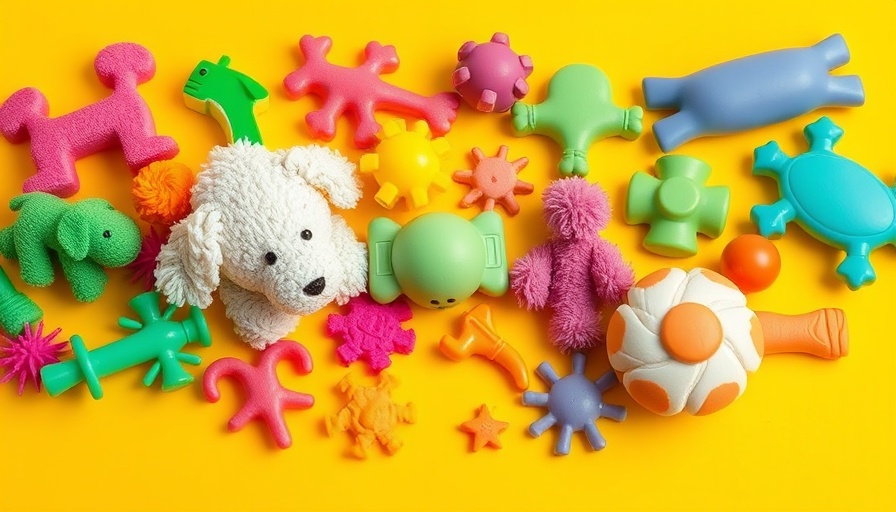
Is Your Pet's Favorite Toy a Hidden Health Risk?
As pet owners, we always prioritize our furry companions' happiness and well-being. Engaging their natural instincts during playtime is not only a joy but a necessity for their health. However, while we’re caught up in their joy, the materials that make up their toys are often overlooked. Recent research raises alarming concerns about the health risks associated with common pet toys, particularly their plastic components.
The Hidden Risks of Plastic](#)
Human health studies have indicated the potential hazards of microplastics, revealing that these tiny particles adversely affect well-being. This troubling finding extends to our pets, who are at an even greater risk of exposure. Research shows that pets, being closer to the ground, are more susceptible to inhaling and ingesting microplastics—often concentrated in household dust. When a dog or cat plays, the chewed and worn-down toys release tiny particles that are easily ingested, leading to various health issues.
Understanding Endocrine Disruption](#)
Many pet toys are produced with phthalates and bisphenol-A (BPA), chemicals known for their potential to mimic hormones in the body. These substances can leach into pets’ systems through their gums, stomachs, and skin while playing, directly impacting their endocrine systems. Studies have associated such exposure with serious conditions, including thyroid dysfunction, weakened immune systems, and heart problems. Furthermore, canned pet food often compounds the risk, as it can significantly elevate BPA levels in the body. For dogs, consuming canned food reportedly triples BPA levels within weeks.
Strategies to Reduce Plastic Exposure](#)
Protecting our pets from these hidden dangers is crucial. Here are some practical strategies you can implement:
- Choose Eco-Friendly Toys: Invest in toys made from natural materials rather than plastic. Look for brands that emphasize non-toxic, sustainable options.
- Filter Water: Using a water filter reduces the likelihood of your pet consuming harmful chemicals present in tap water.
- Avoid Canned Pet Food: Opt for fresh or homemade diets whenever possible to minimize BPA exposure.
- Use Stainless Steel Bowls: Replace plastic feeding and water bowls with stainless steel to limit chemical exposure.
- Choose Plastic-Free Packaging: Buy treats and toys from companies that prioritize environmentally friendly and safe packaging.
Fun Playtime with Safety in Mind](#)
While playtime with your beloved pets is invaluable for bonding, keeping health in mind is vital. The joy on your dog or cat’s face brings warmth to any day, but understanding the materials behind that joy can lead to more wholesome play. Take the time to research brands and choose companions that value transparency concerning their materials and safety measures.
Emotional Connection and Responsibility](#)
Caring for our pets goes beyond simple obedience; it’s about ensuring they lead healthy and happy lives. By being vigilant about what toys and products they interact with, we cultivate a nurturing environment. The time spent with our pets is remarkable, and prioritizing your pet's health ensures that you’ll create a legacy of love and well-being.
Final Thoughts: Prioritize Your Pet’s Health](#)
In conclusion, keeping your pet's health at the forefront while shopping for their favorite toys can lead to safer and more enjoyable playtimes. Ensure you educate yourself continuously about the products you select. As responsible pet parents, we need to protect our furry friends from the hidden dangers of everyday items.
Because each moment spent with our pets is priceless, take steps towards ensuring their wellness today!
 Add Row
Add Row  Add
Add 




 Add Row
Add Row 


 Add
Add
Write A Comment